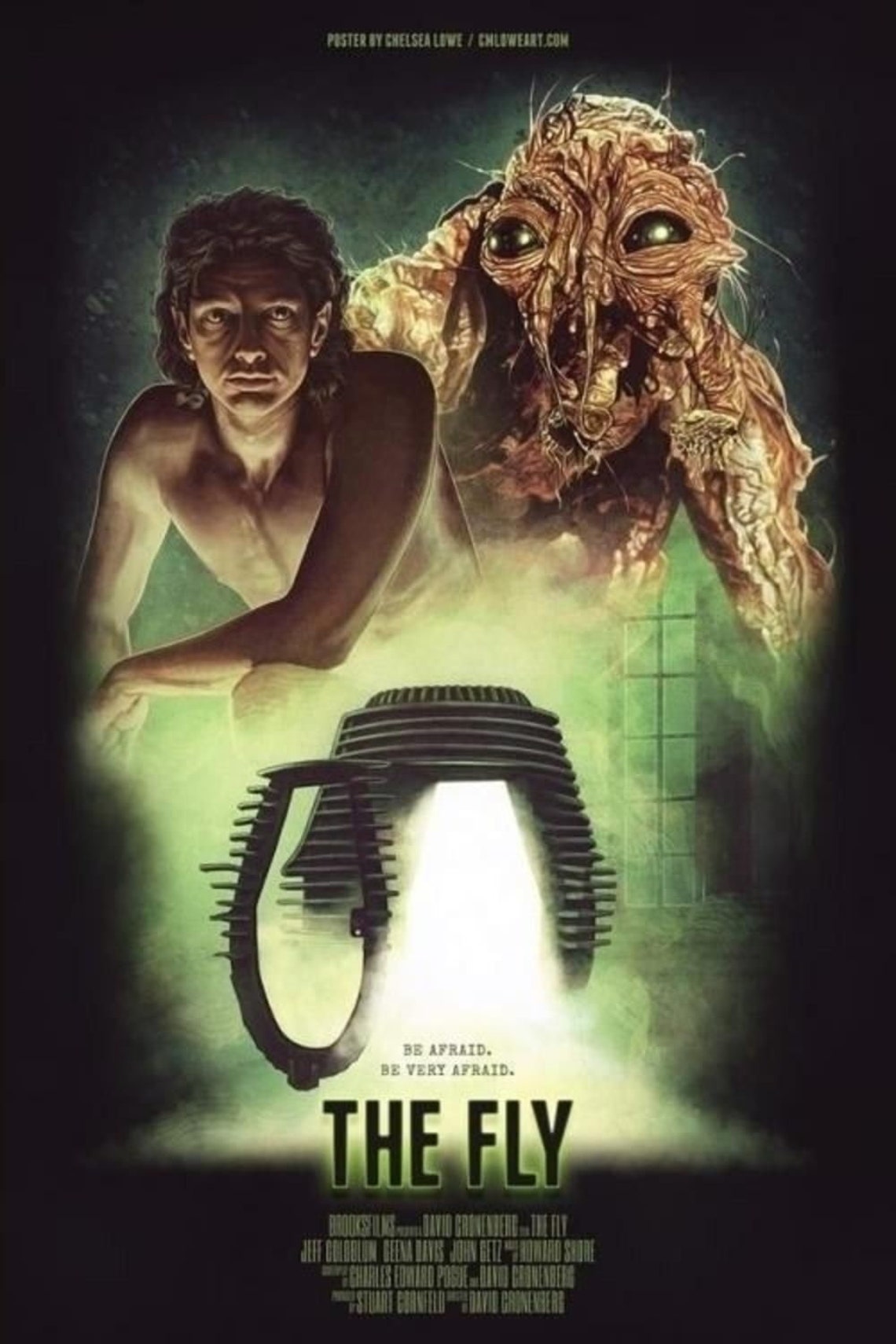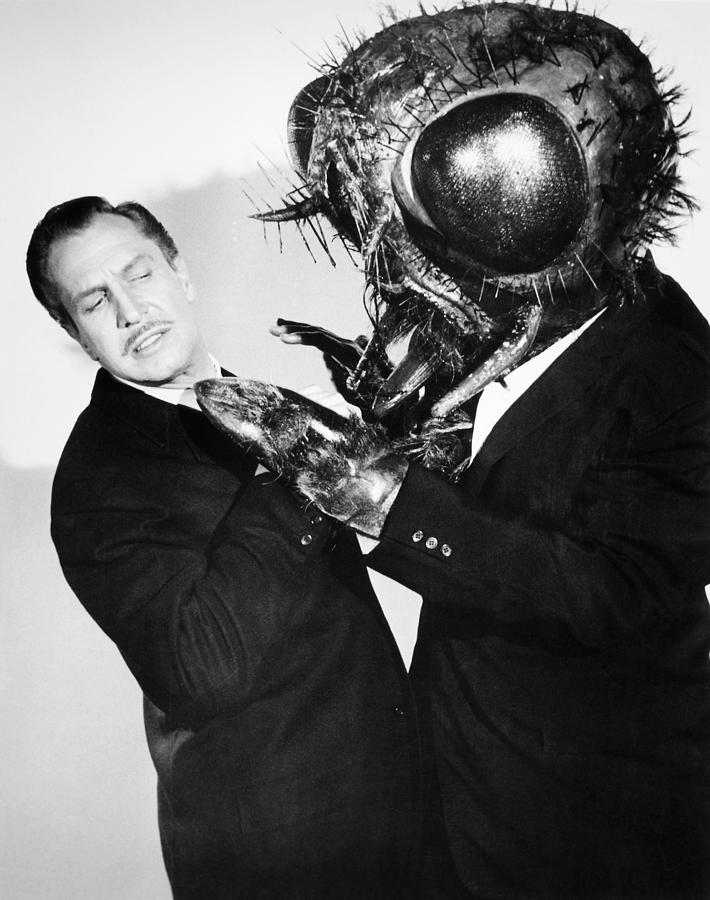Ever wondered what it truly means to push the boundaries of science, or the unsettling potential that lies within our own creations? "The Fly" (1986) offers a chilling exploration of these very questions, wrapped in a narrative of terrifying transformation and scientific hubris.
The allure of "The Fly" (1986), a remake of the 1958 American science fiction horror film, isn't just its genre-bending premise; it's the execution. Directed by David Cronenberg, the film delves into the dark side of scientific ambition and the terrifying consequences of tampering with the fundamental laws of nature. The original, a product of the 1950s, offered a glimpse into the fear of the unknown, but the 1986 iteration, benefiting from advancements in special effects, delivered a visceral experience that seared itself into the collective consciousness of horror fans. The narrative begins with a scientist, Seth Brundle (Jeff Goldblum), who is experimenting with a matter transportation device. During one fateful experiment, a housefly enters the chamber, leading to a horrifying merging of man and insect. This metamorphosis, both physical and psychological, forms the core of the film's dread.
The 1958 version, directed by Kurt Neumann, laid the groundwork for the story's enduring appeal. It starred David Hedison, Patricia Owens, Vincent Price, and Herbert Marshall. This initial exploration offered a stark, black-and-white look at the dangers of scientific overreach, a theme that resonated with the anxieties of the Cold War era. The film, like its successor, was based on a short story by George Langelaan published in Playboy magazine. While the original offered a chilling premise, it was the 1986 remake that truly capitalized on the narrative's potential for horror and suspense, becoming a critical and commercial success.
- Tim Duncan Vanessa Macias Net Worth Relationship Insights 2024
- Salice Rose Aftermath Of The Leaks Rise Above The Storm
The influence of "The Fly" extends beyond its immediate success. It has spawned sequels, including "Return of the Fly" (1959), exploring similar themes of scientific experimentation gone awry. The legacy of the film is also evident in its influence on other science fiction horror films, which have explored similar themes of mutation, body horror, and the dangers of scientific ambition. The 1986 film in particular continues to be discussed and analyzed, a testament to its lasting impact and the universal nature of its themes.
The film's impact also lies in its casting choices. Jeff Goldblum's performance as Seth Brundle is particularly memorable. His portrayal of a brilliant scientist slowly succumbing to a horrifying transformation is both compelling and deeply unsettling. Geena Davis, as Brundle's love interest, provides a crucial emotional anchor, and the supporting cast, including John Getz, contribute to the overall atmosphere of dread and suspense. The combined effort of the cast and crew made the film a landmark in the horror genre.
The thematic elements of "The Fly" are rich and complex. The film explores themes of scientific hubris, the fear of the unknown, and the fragility of the human body. It also touches on the nature of identity, the breakdown of relationships, and the horrifying potential of unchecked scientific advancement. The film isn't simply a monster movie; it's a meditation on the human condition and our inherent fears.
- Anthony Kiedis Dating History From Melanie C To Current Relationships
- Robert Redfords Family Rare Photos Untold Stories See Now
The films impact on the genre is undeniable, influencing countless other films with its body horror, special effects, and its exploration of the darker side of human curiosity. The 1986 versions effects were particularly groundbreaking, with makeup and prosthetic effects creating a truly unforgettable visual experience. The films success also led to the creation of other related content, establishing a lasting influence on horror films.
It is crucial to note the creative process behind "The Fly" (1986). The team behind the film worked together to build the nightmarish reality that captivated audiences. David Cronenberg's direction, coupled with the performances of the cast and the effects team, contributed to the film's lasting legacy.
The film's exploration of base jumping, as explored in a documentary like the one reviewed by Carla Hay of Culture Mix, offers a different perspective on pushing boundaries. While the sport may be rooted in human bravery, it also tests the limits of love and life, testing them across the limits of life. Base jumping tests the limits of love and life, but the same spirit is present in "The Fly" a thirst to see how far things can be pushed. This is why the themes in the film resonate with audiences.
The 1986 version also offers a more nuanced understanding of the scientist's predicament. The film is, in many ways, a tragedy. The scientists struggle is not merely against a physical transformation but also against the loss of his humanity. The film, therefore, resonates on a deeper emotional level, as well as through its horror. It is this emotional depth that has allowed it to live long in the memory of its audiences.
The 1986 film continues to find its relevance today, its ability to draw audiences in with its unique portrayal of horror. The film continues to challenge audiences to reflect on the dangers of scientific progress and the human cost of pushing boundaries.
| Category | Details |
|---|---|
| Film Title | The Fly (1986) |
| Director | David Cronenberg |
| Main Cast | Jeff Goldblum, Geena Davis, John Getz |
| Genre | Science Fiction Horror |
| Based On | Short story by George Langelaan |
| Release Date | August 15, 1986 (United States) |
| Production Company | Brooksfilms |
| Distributed by | 20th Century Fox |
| Key Themes | Scientific hubris, body horror, fear of the unknown, loss of identity |
| Notable Aspects | Groundbreaking special effects, compelling performances, exploration of the human condition |
| Runtime | 96 minutes |
| Rotten Tomatoes Score | 92% (based on reviews of 13 critics) |
| Original Film | The Fly (1958), directed by Kurt Neumann |
| Notable Quote | "Be afraid. Be very afraid." |
The original film, "The Fly" (1958), served as the first installment in the film series, and it offered a slightly different, albeit still terrifying, perspective. The film, directed by Kurt Neumann, starred David Hedison, Patricia Owens, Vincent Price, and Herbert Marshall. It was an American science fiction horror film that became a cornerstone of the genre.
The film tells a tale of a scientist who undergoes a horrific accident after experimenting with his newly invented teleportation device. A fly enters the machine during the transference, leading to a merging of the scientist and the insect. As the scientist slowly transforms, the film delves into themes of paranoia, helplessness, and the disintegration of identity. His brother and inspector Charas work to unravel the mystery. The film's visual effects, though dated by today's standards, were innovative for their time.
One key element of the film is the creation of visual effects for the creature. The creative team, including David Hedison, were involved in devising methods to represent the transformation, including progressive makeup effects that showcased the combined human/fly state. These details highlight the craftsmanship behind the film.
Its worth noting the critical reception of "The Fly" (1986). Reviews on aggregate websites reflect a strong positive response. Critics praised the film's innovative effects, Goldblum's performance, and Cronenberg's direction. The film's ability to scare while simultaneously exploring complex themes earned it a place in the film canon. It is now often ranked among the best horror movies of all time.
As film fans discuss "The Fly", the original (1958) often comes up as a point of reference. Its interesting to compare the two films. While the original laid the foundation, the remake capitalized on advances in technology and offered a more in-depth exploration of the film's themes. The two films, while separate entities, also have common characteristics. Both address the central premise of a scientists fateful experiment. The key to both films is the dramatic arc of transformation and the ensuing struggle.
The original films impact can be seen with its sequels such as "Return of the Fly" (1959). These sequels, in turn, reflect the enduring nature of the original films core concepts. These stories demonstrate the potential for exploration, which has, over the years, established a powerful legacy.
Beyond the movies themselves, "The Fly" has had an impact on popular culture. From inspiring other horror films to influencing artists and writers, its influence can be found in numerous mediums. Its themes of scientific overreach and the blurring of human and animal boundaries continue to fascinate.
The creation of "The Fly" involved intricate creative processes. The film's success lies in the execution of its vision. The film is a testament to the power of collaboration and creative storytelling. The visual presentation is another important aspect of "The Fly" (1986).
The film demonstrates what a great film is meant to be. It delivers on all the essential aspects of storytelling, while also serving as a commentary on the nature of our society.
The film's power is rooted in the combination of a strong narrative, visual horror, and effective performances. The film's themes will likely continue to resonate with viewers for many years to come. The movie "The Fly" serves as a lesson, as well as a warning. It is an important film.
For more information about "The Fly" and its cast and crew, consider checking out reputable sources like the Internet Movie Database (IMDb) or the American Film Institute (AFI) catalog.
The film's power is rooted in the combination of a strong narrative, visual horror, and effective performances. The film's themes will likely continue to resonate with viewers for many years to come. The movie "The Fly" serves as a lesson, as well as a warning. It is an important film.



Detail Author:
- Name : Orion Koelpin
- Username : delta72
- Email : sgrady@barton.com
- Birthdate : 1976-08-29
- Address : 700 Beer Lodge South Gustburgh, IL 17431
- Phone : 785-999-5484
- Company : Schimmel, Reichert and Legros
- Job : Gas Processing Plant Operator
- Bio : Dignissimos ut ex et. Dolor ut commodi et maxime et quia nemo. Qui sit tenetur porro consequatur qui deserunt. Qui similique nisi quos aperiam.
Socials
twitter:
- url : https://twitter.com/lesch2008
- username : lesch2008
- bio : Ex voluptas consequuntur aut veritatis ut aut. Quas dolor aut consectetur molestiae. Ab accusantium culpa aperiam iure expedita. Et et porro beatae.
- followers : 6690
- following : 940
linkedin:
- url : https://linkedin.com/in/natasha5102
- username : natasha5102
- bio : In saepe natus nemo aut accusamus.
- followers : 3764
- following : 426